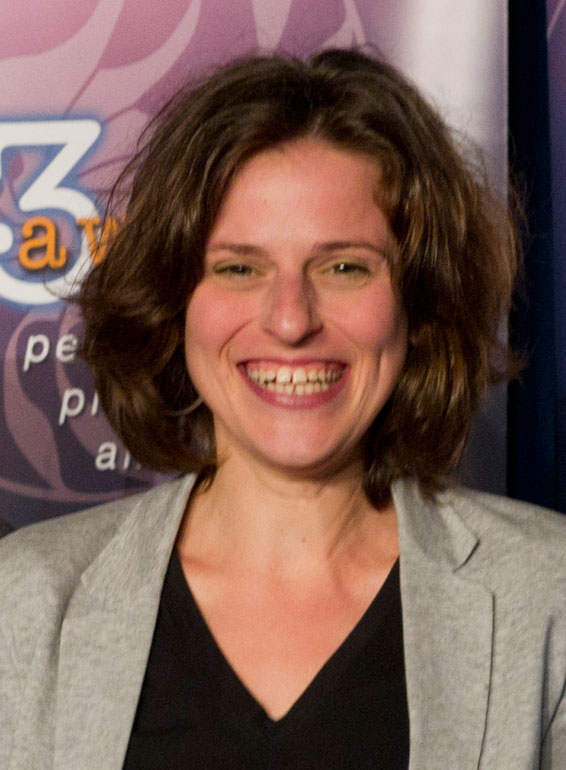Marisa Chrysochoou
Department Head and Professor
Department of Civil and Environmental Engineering
Education
- Ph.D. in Environmental Engineering, Stevens Institute of Technology, Hoboken NJ, May 2006
- Master of Science in Environmental Engineering, with honors. Technische Universitaet Dresden, Germany, January 2003
- Bachelor of Science in Physics, with honors. Aristotle University of Thessaloniki, Greece, March 2000
Research Focus
- Environmental geochemistry
- Contaminated site remediation
- Beneficial use of industrial by products and recycled materials
- Clay mineralogy
- Leverage solid state, traditional geochemical, geotechnical and modeling approaches to assess and predict the behavior of soil constituents in complex geoenvironmental systems for purposes of characterization and treatment, as well as to characterize industrial waste materials
Awards
- Women of Innovation Postsecondary Academic Innovation and Leadership Award, 2020
- Distinguished Service Award, Association of Environmental Engineering & Science Professors, 2020
- Marie Curie International Incoming Fellowship, European Union, 2013-2015
- University of Connecticut Environmental Leadership Award, 2012
- P3 (People, Prosperity and the Planet) Award, U.S. Environmental Protection Agency, 2012
Publications
Kollias K., Mylona E., Adam K., Chrysochoou M., Papassiopi N. and Xenidis A. 2019. Characterization of phosphate coating formed on pyrite surface to prevent oxidation, Applied Geochemistry, 110, 104435.
Bompoti N., Chrysochoou M. and Machesky M. 2019. A unified surface complexation modeling approach for chromate adsorption on iron oxides, Environmental Science and Technology, 53(11), 6352-6361.
Du Y. and Chrysochoou M. 2020. Microstructural Analyses of Cr(VI) Speciation in Chromite Ore Processing Residue from the Soda Ash Process, Journal of Hazardous Materials, https://doi.org/10.1016/j.jhazmat.2020.122385.
Mystrioti C., Sparis D., Papassiopi N., Xenidis A., Dermatas D. and Chrysochoou M. “Polyphenol-coated nano zero-valent iron for hexavalent chromium removal” Bulletin of Environmental Contamination and Toxicology, in press.
Panagiotakis I., Dermatas D., Vatseris C., Chrysochoou M., Papassiopi N., Xenidis A. and Vaxevanidou K. 2015. Forensic Investigation of a Chromium(VI) groundwater plume in Thiva, Greece, Journal of Hazardous Materials, 281. 27-34.
Dermatas D., Mpouras A., Chrysochoou M., Vatseris C., Papassiopi N., Xenidis A., Theologou E. and Bompoti N. 2015. Origin and concentration profile of chromium in a Greek aquifer, Journal of Hazardous Materials, 281, 35-46.
Chrysochoou M. and Johnston C.P., 2015. Sulfur speciation and reactivity in calcium-polysulfide treated soil, Journal of Hazardous Materials, 281, 87-94.
Johnston C.P. and Chrysochoou M., 2015. Mechanisms of chromate adsorption on boehmite, Journal of Hazardous Materials, 281, 56-63.
Mystrioti C., Papassiopi N., Xenidis A., Dermatas D. and Chrysochoou M., 2015.,“Column study for the evaluation of the transport properties of polyphenol coated nano iron”, Journal of Hazardous Materials, 281, 64-69.
Johnston C.P. and Chrysochoou M., 2014. Mechanisms of chromate adsorption on hematite, Geochimica et Cosmochimica Acta, 138, 146-157.
Chrysochoou M., 2014. Investigation of mineral dissolution rate and strength development in stabilized soils using quantitative X-ray Diffraction, Journal of Materials in Civil Engineering, 26(2), 288-295
Chrysochoou M., Zhang X and Amador J., 2013. Comparison of Cr(VI) reduction by aerobic bacteria in culture and soil conditions, Soil and Sediment Contamination, 22, 273-287. M. CHRYSOCHOOU page 5
Johnston C.P. and Chrysochoou M., 2012. Investigation of Chromate Coordination on Ferrihydrite by in situ ATR-FTIR Spectroscopy and Theoretical Frequency Calculations, Environmental Science and Technology, 46(11), 5851-5858.

| marisa.chrysochoou@uconn.edu | |
| Phone | 860-486-3594 |
| Fax | 860-486-8992 |
| Mailing Address | 261 Glenbrook Road Unit 3037, Storrs, CT 06269-3037 |
| Office Location | Castleman Building, Room 304 |
| Campus | Storrs |
| Link | https://geo.engr.uconn.edu/ |